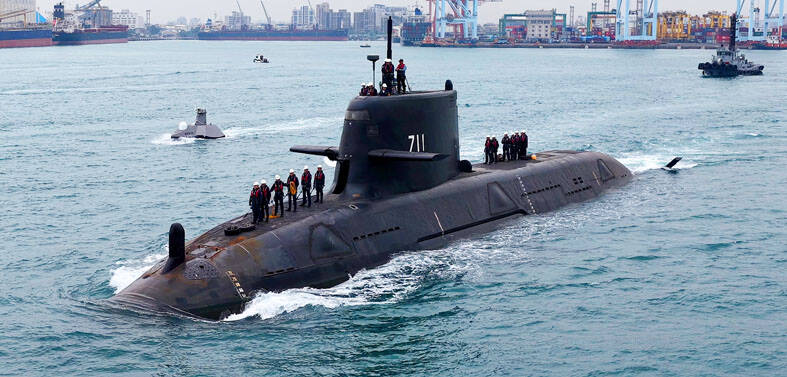The Directorate-General of Highways (DGH) launched a new Web site yesterday as part of the Ministry of Transportation and Communications’ campaign to encourage people to use public transport as much as possible.
Aside from a timeline of how the nation’s public bus system was started in the early 20th century, the Web site shows photographs of the bus tickets offered by different bus operators around the nation in the 1960s, as well as pictures of passengers waiting at bus stations.
The site will also publish articles about highways and public buses in different locations around the nation, including those in Greater Tainan, Greater Kaohsiung, Chiayi, Keelung, Miaoli and the nation’s outlying islands.
DGH Director-General Wu Meng-fen (吳盟分) said highway buses allow people to travel freely around the nation without having to drive.
“All you have to do is pick up your luggage and go,” Wu said. “Instead of having to deal with the hassle of driving, travelers can sit in comfort on the bus and enjoy the beautiful scenery along the way.”
Aerial photographer Chen Ming-ming (陳敏明) and writer Hau Yu-hsiang (郝譽翔) were invited to share their observations about the scenery in Taiwan on land, as well as at sea.
Chen said he often uses the bends along highway routes as a way to confirm locations for shoots.
He added that the nation’s highways have many bends and it would be a spectacular landscape if one could look at them from the ground and from the sky.
Hau said she became interested in sailing two years ago.
“The Taiwan Strait, also known as the ‘Black Ditch,’ poses a threat to boats sailing westward because of its strong north-south ocean current. However, it is one of the sea lanes in the world with the heaviest traffic. When you travel in the strait at night, you can see [beautiful scenes of] fishing boats with their lights on everywhere,” she said.

SHIPS, TRAINS AND AUTOMOBILES: The ministry has announced changes to varied transportation industries taking effect soon, with a number of effects for passengers Beginning next month, the post office is canceling signature upon delivery and written inquiry services for international registered small packets in accordance with the new policy of the Universal Postal Union, the Ministry of Transportation and Communications said yesterday. The new policy does not apply to packets that are to be delivered to China, the ministry said. Senders of international registered small packets would receive a NT$10 rebate on postage if the packets are sent from Jan. 1 to March 31, it added. The ministry said that three other policies are also scheduled to take effect next month. International cruise ship operators

NUMBERS IMBALANCE: More than 4 million Taiwanese have visited China this year, while only about half a million Chinese have visited here Beijing has yet to respond to Taiwan’s requests for negotiation over matters related to the recovery of cross-strait tourism, the Tourism Administration said yesterday. Taiwan’s tourism authority issued the statement after Chinese-language daily the China Times reported yesterday that the government’s policy of banning group tours to China does not stop Taiwanese from visiting the country. As of October, more than 4.2 million had traveled to China this year, exceeding last year. Beijing estimated the number of Taiwanese tourists in China could reach 4.5 million this year. By contrast, only 500,000 Chinese tourists are expected in Taiwan, the report said. The report

Temperatures are forecast to drop steadily as a continental cold air mass moves across Taiwan, with some areas also likely to see heavy rainfall, the Central Weather Administration (CWA) said. From today through early tomorrow, a cold air mass would keep temperatures low across central and northern Taiwan, and the eastern half of Taiwan proper, with isolated brief showers forecast along Keelung’s north coast, Taipei and New Taipei City’s mountainous areas and eastern Taiwan, it said. Lows of 11°C to 15°C are forecast in central and northern Taiwan, Yilan County, and the outlying Kinmen and Lienchiang (Matsu) counties, and 14°C to 17°C

STEERING FAILURE: The first boat of its class is experiencing teething issues as it readies for acceptance by the navy, according to a recent story about rudder failure The Hai Kun (海鯤), the nation’s first locally built submarine, allegedly suffered a total failure of stern hydraulic systems during the second round of sea acceptance trials on June 26, and sailors were forced to manually operate the X-rudder to turn the submarine and return to port, news Web site Mirror Daily reported yesterday. The report said that tugboats following the Hai Kun assisted the submarine in avoiding collisions with other ships due to the X-rudder malfunctioning. At the time of the report, the submarine had completed its trials and was scheduled to begin diving and surfacing tests in shallow areas. The X-rudder,